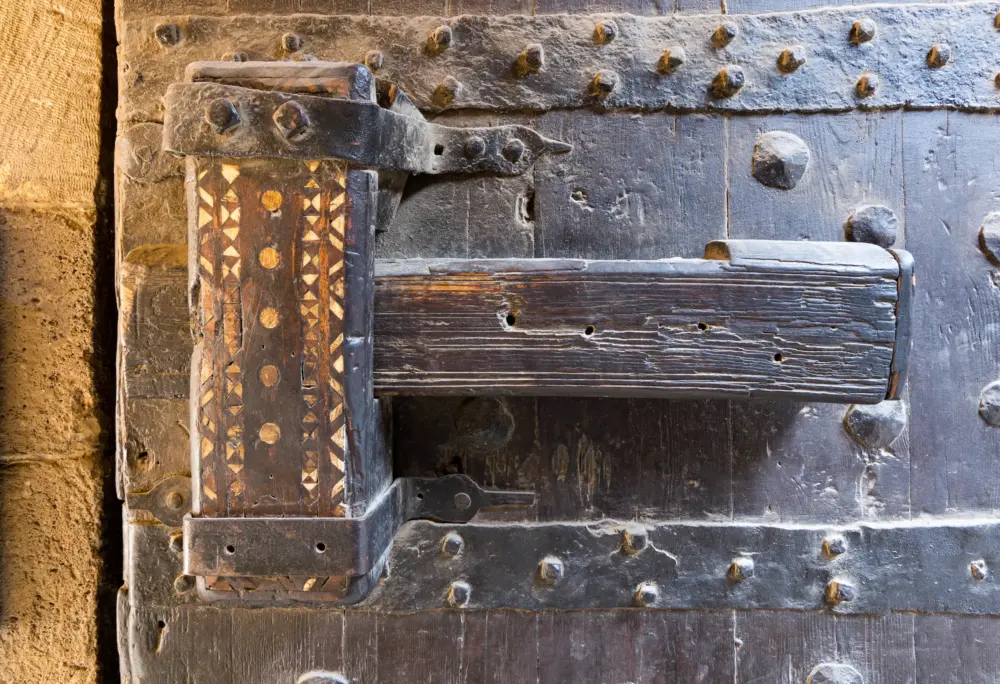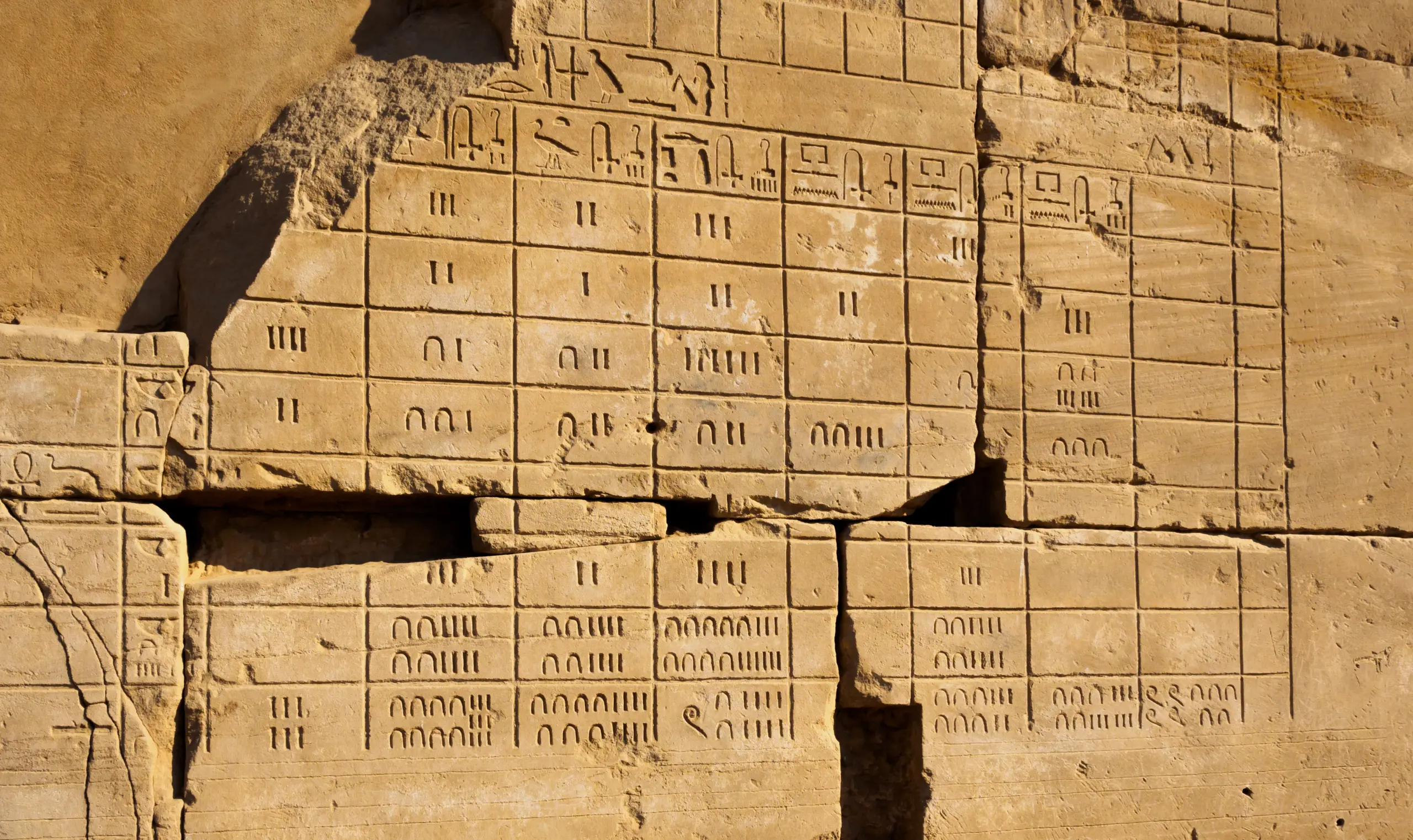4 Ancient Egyptian innovations
that changed the world
Can you picture a world without writing, the calendar or paper? From irrigation to the mysterious pyramids, Egypt is home to some of the most intriguing inventions in human history.
Join us on a journey back in time and discover the intriguing legacy of an ancient civilization that still impacts our lives today.
It all began 5,000 years ago when ancient Egyptians permanently settled along the shimmering waters of the Nile River. Motivated to reach the Afterlife, technology was one way to honour the goddess of orderliness, called Ma’at. Her powerful sense of morality and justice brought Egyptians together to develop these revolutionary inventions including the pyramids — one of the Seven Wonders of the World!
Get ready to explore 4 other extraordinary Ancient Egyptian innovations that changed the world:

1. Locks
Ancient Egyptians are credited with inventing some of the earliest known mechanical locks. The oldest known example of a lock, dating back to 2000 BCE, was found in the ruins of the ancient Egyptian city of Nineveh.
These locks weren’t Fort Knox, but they got the job done! The mechanism relied on wooden pins that could only be moved when the correct key was inserted. Keys were typically wooden pegs with notches along their length. These notches corresponded to the positions of the pins within the lock and when the key was inserted and turned, it lifted the pins to align with slots, allowing the lock to be opened. While this contraption could be bypassed by someone with sufficient determination, they provided a basic level of security and were extremely effective for their time.

2. Calendars
Egyptians were the first to use the solar calendar. They were able to observe the movements of the sun and stars with remarkable precision, allowing them to develop a calendar close to the length of a solar year. These calendars have some surprisingly similar features to our own. On the Egyptian solar calendar:
1 year = 365 days / 12 months
1 month = 30 days
1 week = 10 days
You math whizzes might notice that 12 months, 30 days in length, only adds up to 360 days. Good eye! An additional 5 days were added at the end of each year. These days were considered to be outside of the normal calendar and were reserved for celebrations and festivals.
Pictured on the right is an early calendar found at the Karnak Temple in Luxor.

These calendars tracked 3 seasons, each lasting 4 months, that were heavily influenced by the Nile:
Akhet
Translates to Inundation to signify the time of year when the Nile River flooded from a yearly monsoon in the Ethiopian Highlands.
Proyet
This season is called Emergence to represent the fertile land that was left after the period of flooding.
Shomu
Aptly named Harvest season, this was the dry season that occurred before the next flooding.
3. Writing, Paper and Ink
Just like us, ancient Egypt had to document important moments, create reports and produce academic research. Enter: the writing system of hieroglyphs! At first glance, hieroglyphs look like fascinating visual stories of people, animals, and beautiful objects. Instead, they represent phonetic sounds and concepts just as we use writing today. Traced back to 3100 BC, the exact origins of hieroglyphics remain a mystery.
Building the pyramids only accelerated the development of writing. In 2013, hundreds of 4500-year-old papyrus were discovered by archaeologists in a cave by the Red Sea. The incredible artifacts reveal the story of an inspector named Merer who worked on the construction of the Great Pyramid of Giza. Merer created a daily timetable of reports on the work of construction workers and the progress of limestone blocks being exhumed from a nearby city. Today these drawings can be found at the Egyptian Museum Cairo (EMC).

4. Makeup
Both women and men of Ancient Egypt wanted to embody youth and health. Egyptians of all social classes wore makeup to give them personal power, protect themselves from the gleaming desert sun and even to ward off evil influences. They applied foundation made from ingredients like clay or animal fat to moisturize and protect themselves from the sun. They’d also used rouge made from red ochre or crushed berries to add colour to their cheeks and lips.
One of the most iconic elements of ancient Egyptian beauty is the distinctive eye makeup. Wealthy men and women wore expensive kohl eyeliner, while peasants used less expensive materials, like red clay. Kohl was made from ground lead sulfide or antimony and applied around the eyes in a thick line that extended to the temples. It served both cosmetic and practical purposes, protecting the eyes from the harsh sun and reducing glare. This eye makeup had symbolic significance as well and was associated with the protective Eye of Horus, a powerful symbol of healing and protection.

Other notable inventions:

Clocks
The earliest known clock was a sundial, excavated in the Valley of the Kings in 2013.

Perfume
Ancient Egyptians were also the first to counteract body odour with essential oils.

Irrigation
Egyptians dug sprawling canals from the Nile River to irrigate crops and created reservoir containers for seasons of drought.

Healthcare
Evidence shows that the labourers who built the tombs in Valley of the Kings were given access to quality health care and even paid sick days.
Today we can appreciate the innovations of ancient Egypt in our everyday life. When you check the time to meet your friend or read your favourite book, know that it all started in the ancient Egyptian civilization!
Are you ready to explore Egypt’s living history?
Join us on tour!
Ancient Egypt & the Nile
Take a journey back in time as you amble through the monuments, tombs and temples that line the ancient avenues of Egypt. Gaze up at the Great Sphinx and the panoramic pyramids of Giza, venture inside a pyramid and stand awestruck in the face of astonishing temples built for the gods. Travel to Alexandria, historically known as the capital of knowledge and learning, and soak in the splendour of picturesque scenery as you spend seven days cruising down the Nile. Relax by the Red Sea and experience brilliant white sand and sparkling turquoise waters in the coastal town of Hurghada. On this tour, get swept away in Egypt’s living history with every sight you see and every city you visit.
Departures: March & April 2026September, October & November 2026March & April 2027 (+$200)
